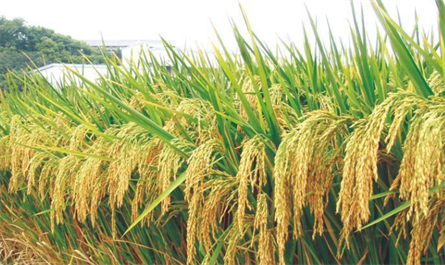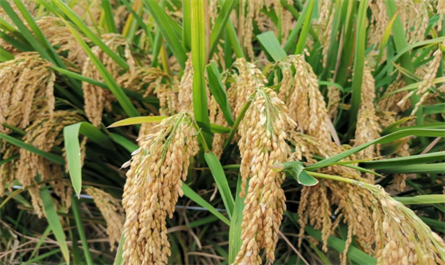Characteristics of Rice Cultivation in Indonesia and Recommended Rice Plant Growth Regulators
Indonesia is the world's third-largest rice producer, and its rice cultivation has the following characteristics:

Plant Scale and Yield
Indonesia has approximately 80 million hectares of arable land, with rice cultivation accounting for approximately one-third of this area. In 2023, Indonesia's total rice production reached 76 million tons, with an average yield of 5.34 tons per hectare. However, hybrid rice varieties introduced from China have achieved yields of up to 12.16 tons per hectare in local demonstration plots.
Planting Areas and Varieties
Indonesia's rice production is primarily distributed on the island of Java (accounting for 51.7% of the country's total production), followed by islands such as Sumatra, Sulawesi, and Kalimantan. Conventional rice is the dominant variety grown locally, with high-yield hybrid rice occupying only 3% of the total area. However, Indonesia imports approximately 3 million tons of rice annually to meet demand.
Policies and Markets
The Indonesian government plans to ensure food security by developing 3 million hectares of new rice fields, promoting high-quality seeds, and mechanized production. Currently, the purchase price of rice in Indonesia is on the rise, with the 2023 purchase price for wet rice estimated at 2.76-2.95 yuan per kilogram.
Challenges and Opportunities
Indonesia faces challenges, including shrinking agricultural land and growing food demand. However, the local adoption of Chinese hybrid rice technology (such as the Inpago and Inpari varieties) could increase yields by 20%-50%. The Indonesian government encourages the introduction of high-quality Chinese varieties and supports the development of relevant agricultural infrastructure.
Commonly used plant growth regulators in rice cultivation include Gibberellic Acid (GA3), Paclobutrazol (Paclo), Brassinolide (BRs), and Prohexadione Calcium. Specific recommendations are as follows:

Gibberellic Acid (GA3)
Applicable during the sowing and seedling raising stage, it can break seed dormancy, promote hypocotyl elongation, increase germination rates by 10%-20%, and shorten emergence time by 2-3 days. The recommended concentration for aging seed treatment is 20-30 mg/L (soaking for 48-72 hours), and 10-15 mg/L (soaking for 24-36 hours) for low-temperature seedlings.
Paclobutrazol (Paclo)
It is used to control excessive plant growth, inhibit internode elongation, shorten the length of the basal 1-3 internodes by 20%-30%, increase stem thickness by 15%, and improve lodging resistance by 40%. The recommended dosage is 40 g/acre of 15% Paclobutrazol, sprayed during the tillering or booting stage of rice.
Brassinolide (BRs)
It promotes photosynthesis and enhances stress resistance. 24-epibrassinolide can be applied as a foliar spray to enhance plant resistance; 28-homobrassinolide is suitable for crops such as corn and wheat to promote growth.
Prohexadione calcium
It is used to control excessive growth and prevent lodging in rice, inhibit cell division, and shorten the length of the basal internodes. The recommended dosage is 15% Prohexadione calcium 40 g/mu, sprayed at the end of rice tillering or heading stage.

Plant Scale and Yield
Indonesia has approximately 80 million hectares of arable land, with rice cultivation accounting for approximately one-third of this area. In 2023, Indonesia's total rice production reached 76 million tons, with an average yield of 5.34 tons per hectare. However, hybrid rice varieties introduced from China have achieved yields of up to 12.16 tons per hectare in local demonstration plots.
Planting Areas and Varieties
Indonesia's rice production is primarily distributed on the island of Java (accounting for 51.7% of the country's total production), followed by islands such as Sumatra, Sulawesi, and Kalimantan. Conventional rice is the dominant variety grown locally, with high-yield hybrid rice occupying only 3% of the total area. However, Indonesia imports approximately 3 million tons of rice annually to meet demand.
Policies and Markets
The Indonesian government plans to ensure food security by developing 3 million hectares of new rice fields, promoting high-quality seeds, and mechanized production. Currently, the purchase price of rice in Indonesia is on the rise, with the 2023 purchase price for wet rice estimated at 2.76-2.95 yuan per kilogram.
Challenges and Opportunities
Indonesia faces challenges, including shrinking agricultural land and growing food demand. However, the local adoption of Chinese hybrid rice technology (such as the Inpago and Inpari varieties) could increase yields by 20%-50%. The Indonesian government encourages the introduction of high-quality Chinese varieties and supports the development of relevant agricultural infrastructure.
Commonly used plant growth regulators in rice cultivation include Gibberellic Acid (GA3), Paclobutrazol (Paclo), Brassinolide (BRs), and Prohexadione Calcium. Specific recommendations are as follows:

Gibberellic Acid (GA3)
Applicable during the sowing and seedling raising stage, it can break seed dormancy, promote hypocotyl elongation, increase germination rates by 10%-20%, and shorten emergence time by 2-3 days. The recommended concentration for aging seed treatment is 20-30 mg/L (soaking for 48-72 hours), and 10-15 mg/L (soaking for 24-36 hours) for low-temperature seedlings.
Paclobutrazol (Paclo)
It is used to control excessive plant growth, inhibit internode elongation, shorten the length of the basal 1-3 internodes by 20%-30%, increase stem thickness by 15%, and improve lodging resistance by 40%. The recommended dosage is 40 g/acre of 15% Paclobutrazol, sprayed during the tillering or booting stage of rice.
Brassinolide (BRs)
It promotes photosynthesis and enhances stress resistance. 24-epibrassinolide can be applied as a foliar spray to enhance plant resistance; 28-homobrassinolide is suitable for crops such as corn and wheat to promote growth.
Prohexadione calcium
It is used to control excessive growth and prevent lodging in rice, inhibit cell division, and shorten the length of the basal internodes. The recommended dosage is 15% Prohexadione calcium 40 g/mu, sprayed at the end of rice tillering or heading stage.
RECENT POSTS
-
Thailand has a strong market demand for plant growth regulators with China being one of its importing countries
-
Corn Cultivation in Mexico
-
Analysis of the Current Development and Future Trends of Mexico's Agriculture and Pesticide Market
-
Characteristics of Rice Cultivation in Indonesia and Recommended Rice Plant Growth Regulators
Featured News



